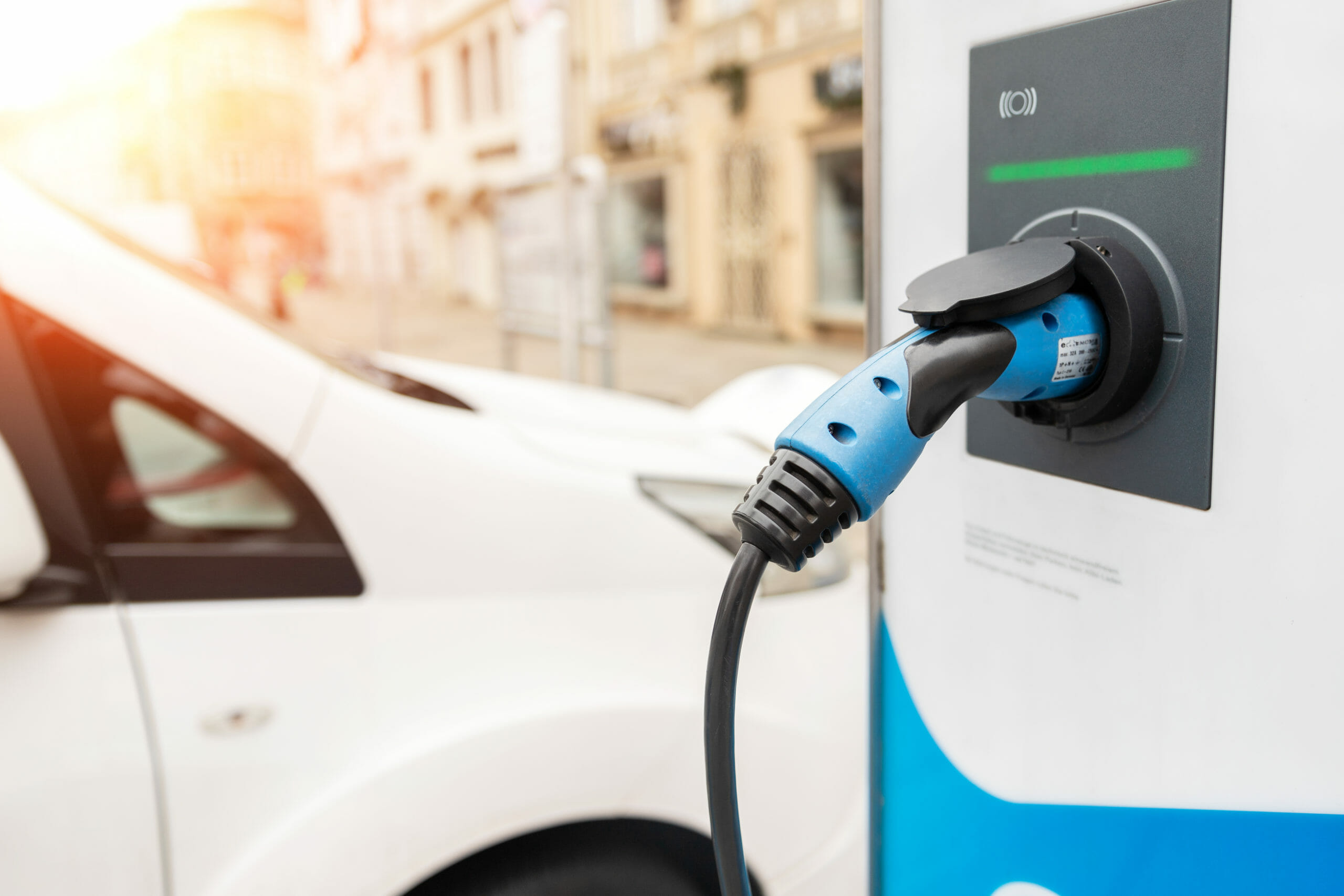Should tradesmen consider an electric van for their business?

The electric vehicle (EV) revolution is upon us, with the 43% increase in sales during 2020 dubbed the “tipping point” of rapid mass adoption. Attributed to the plummeting cost of batteries, the global sales of zero emission and plug-in hybrid vehicles are set to overtake those with internal combustion engines by 2047.
And while electric cars are by far the most in-demand type, electric vans (e-vans) are becoming increasingly popular too. We’re currently seeing a considerable rise in the number of e-vans available in the UK, with the likes of VW, Ford and Mercedes recently joining established brands such as Nissan and Renault in selling them here. That said, e-vans still account for only a small portion of van sales overall, and remain something of a mystery to many.
Of course, for many tradesmen, buying or leasing a trusty van is essential, enabling them to get from A to B with all their tools. And as e-vans potentially offer certain advantages over conventional vehicles, plenty of tradesmen will be wondering whether or not it’s a good idea to swap out their current model. If you’re in that situation yourself, then you’ve come to the right place, as we look at the advantages and disadvantages of e-vans.
The advantages of electric vans
1 – e-Vans are cheaper to run
E-vans are usually less expensive than diesel or petrol models, as filling up on fuel is more costly than electricity at charging stations, which is sometimes even free. That said, there’s limited data available specifically related to the costs of e-van electricity, though research from The Mobility House does show that, over a distance of 15,000km (9321 miles) the petrol-powered Hyundai i30 has energy consumption costs of €1170 (£1,019), compared to €662 (£576) for the electric Hyundai IONIQ. It’s safe to assume that e-van owners would reap these cost-saving benefits too.
2 – e-Vans are cheaper to maintain
As well as being less expensive to run than fuel-powered vans, e-vans have fewer moving parts and are softer on their brakes, meaning they’re less prone to wear and tear, which also makes them cheaper to maintain. In the Mobility House study cited above, it was found that a Hyundai i30 owner paid around €744 (£647) a year to maintain and repair their car, whereas a Hyundai IONIQ driver spent only €552 (£480).
3 – e-Van owners enjoy significant incentives
As part of its drive towards electrification, the UK government has introduced plenty of incentives to encourage Brits to buy EVs. For example, individuals can get up to 35% off when buying an EV through the country’s Plug-in Car Grant, exemption from Vehicle Excise Duty (annual road tax), and free or discounted parking in many towns and cities. They can also enjoy up to a 75% discount on home EV charger purchases and installation costs as part of the UK’s Home Charger Grant.
4 – e-Vans are environmentally friendly
The biggest reasons governments are pushing people towards EVs is because of the hugely detrimental environmental impact fuel-powered vehicles have. While their petrol-powered counterparts emit massive amounts of greenhouse gases and air pollutants, EVs have no tailpipe, meaning they produce no CO2 emissions while driving. In fact, one electric car on the road can save an average 1.5 million grams of CO2 a year. Doing your part for the planet will not only benefit the environment, but help give your business a socially-conscious image that could help you attract even more customers. Win win!
5 – e-Vans are easy and pleasant to drive
E-vans are generally much easier to drive than conventional vans, as they usually involve simply pressing the accelerator pedal to go and brake to stop, with no need to change gear. They’re also especially nippy, considering electric motors offer instant torque, and what’s more, e-vans are often a lot quieter than fuel-powered vans, which makes them more pleasant to drive. Some are almost silent, apart from a hum you’ll hear at low speeds.
The disadvantages of electric vans
1 – e-Vans have range issues
Although the driving range of e-vans keeps improving, they still won’t travel as far on a single charge as standard vans will on a tank of fuel. As such, you will have to stop more often, making them pretty unsuitable for long-distance driving. In addition, an e-van’s quoted efficiency is likely to be even lower than this in reality. For instance, if you’re told it will drive 100 miles between charges, you’ll probably only get 80 miles or so, and this range can also be impacted by payload weight, driving style and weather conditions.
2 – e-Vans face charging challenges
Unfortunately, e-vans take a lot more time to charge than conventional vans do to get filled up with fuel. While you can be in and out of a petrol station in minutes, it takes DC rapid chargers around 40 minutes to give you an 80% charge. Worse still, home charging station users usually do so overnight, and normal three-pin plugs typically require a whole day. Moreover, it’s much less convenient to charge your e-van out and about, as there are fewer public charging stations than petrol stations, though this number is growing all the time. Lastly, e-van batteries lose performance over time, although this is often covered in a vehicle’s warranty.
3 – e-Vans aren’t as cheap as they appear
Although there are certainly some financial benefits to owning an e-van, it’s not as clear-cut as saying outright that they’re cheaper than conventional vans. In fact, the aforementioned Mobility House study shows that the overall costs of electric and petrol cars are actually pretty similar. This is because EVs are typically more expensive to buy up front, with the Hyundai EV costing almost €9000 (£7836) more, largely down to the battery. However, as touched upon, battery prices are going down too, so perhaps the difference might not be so large in the future. In addition, it’s worth noting that EVs tend to have less residual value too, though this gap also appears to be closing as time goes on.
4 – e-Vans have reduced payloads
The amount of weight that e-vans can carry is often reduced because of their heavy batteries. The Nissan NV200, for example, has a maximum payload of 728kg, whereas its electric equivalent, the e-NV200, can handle 705kg. Depending on your line of work, however, this is easily seen as quite a small difference, and may not impact the average tradesman too much.
5 – e-Vans aren’t completely sustainable
While there’s no question that e-vans are much better for the environment than fuel-based alternatives, they’re not completely good for it either. Though 2020 saw renewables (wind and solar) overtook fossil fuels (gas and coal) as the UK’s primary electricity source for the first time, 41% of electricity is still produced by the latter. Furthermore, an e-van’s battery has high environmental costs, as they are made of rare earth elements from beneath the Earth’s surface that must be mined using energy-intensive extraction methods.
The Tradesman Saver verdict
All in all, the decision to buy an e-van is hugely dependent on the individual circumstances of your tradesman business. For those travelling long distances and without significant money in the bank to cover the initial outlay, it probably makes sense to stick to your conventional van for the time being.
However, despite their shortcomings, the environmental benefits of e-vans are hard to ignore. This means those with enough funds should seriously consider investing in one, particularly as the long-term costs aren’t too different from fuel-powered vans. Add in how easy and pleasant they are to drive, and you easily can see why more and more Brits are buying e-vans.






